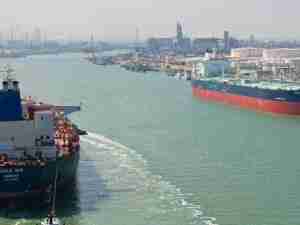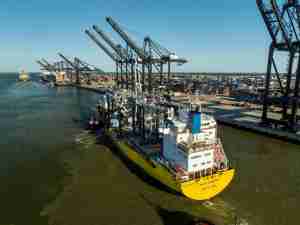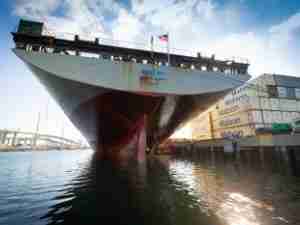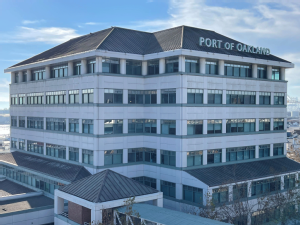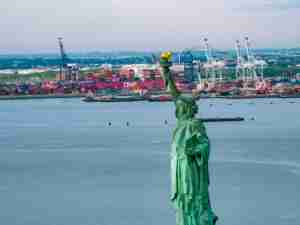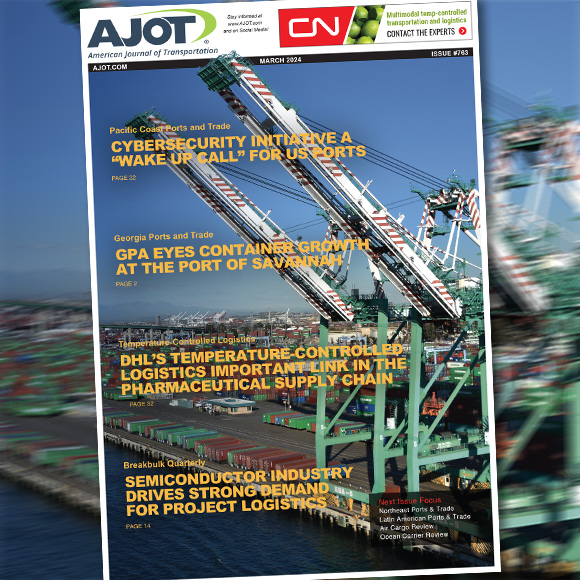The Great Lakes Seaway Partnership (GLSP) today reported a strong start to the 2022 navigation season, which kicked off in late March. Highlights from Great Lakes ports in March and April include significant agricultural exports and renewable energy material imports.
“In times like this, it is reassuring to see our ports in the Great Lakes St. Lawrence Seaway System working hard to keep the supply chain moving,” Craig H. Middlebrook, Deputy Administrator of the Great Lakes St. Lawrence Seaway Development Corporation said. “The Great Lakes Seaway marine transportation system is critical infrastructure, and remains vital to keeping commerce flowing without disruption in order to support North America’s agricultural, manufacturing, construction, energy, and mining industries.”
In particular, grain exports out of the U.S. through the Great Lakes reached 176,000 metric tons, a 112,000 metric tonnage increase (175 percent) compared to the start of 2021, which saw 64,000 metric tons exported during the same time frame. This is in part due to the war in Ukraine, a country that is typically heavily relied upon to export grains around the globe.
Key Highlights from the Great Lakes
Lake Ontario
The Port of Oswego received one shipment of wind equipment from South Korea and two shipments of aluminum from Quebec, while it exported a shipment of soybeans to Ireland. The Port of Ogdensburg also received a shipment of wind equipment from India, indicating the State of New York as a leading destination for renewable energy material imports.
“Given the consequences to global food supply amid the war in Ukraine, the rest of the world has had to step up to fill the void.” said William W. Scriber, director of the Port of Oswego. “Here in Oswego, we’re proud to be a major player in helping the world meet its demand for grains.”
The Port of Oswego has stepped up to help meet global grain demand amid the war with its first export of the season being 18,000 metric tons of soybeans to Europe. The Port of Oswego expects more of these exports to be made throughout the season.
Lake Erie
The Port of Cleveland has proved to be a leading importer, as seven salties have arrived at this location carrying containerized goods, steel products, and general cargo including machinery.
“We’ve worked diligently to improve our operations and increase the capacity across our docks in recent years,” said William D. Friedman, president of the Port of Cleveland. “It’s no coincidence that we’ve positioned ourselves as an emerging port of call for containerized cargoes from across the globe.”
Additionally, the Port of Toledo has been off to a good start in 2022. Through April, 78 vessels have already called upon the Port of Toledo and its tonnage is up nearly 11% over the same period in 2021. Grain, salt, coal and liquid bulk are all outpacing 2021 totals.
“While it is early in the season, there are signs that 2022 will be successful,” said Joseph Cappel, VP of Business Development for the Toledo-Lucas County Port Authority. “Grain and fertilizer are expected to be big movers in 2022 as trade patterns and pricing continue to fluctuate based on various global happenings. If our staple commodities like coal, iron ore and other dry bulk commodities remain consistent, we will have a strong year.”
The Port of Ashtabula has also been busy so far with inbound shipments of ilmenite sand from Senegal, ferrochrome from Finland, and two shipments of titanium slag from Canada and Norway.
Lake Michigan
Partnering with the craft brewer and food manufacturer Briess Malt, the Port of Manitowoc utilized a new maritime supply chain route to import Danish Barley from Quebec. Previously, these shipments arrived from Thunder Bay but thanks to the new route, Manitowoc can receive barley from Quebec. This has enabled the Port of Manitowoc to increase its malt capacity and give Briess more options for importing the product, according to Paul Braun, the city planner for the City of Manitowoc.
